You can translate this blog using Google translator widget. And you can always comment in your language, of course!
Yellow texts are in English

montgomery clift
30.12.08
29.12.08
Big Sky.- Christmas Tale
23.12.08
Screen Guide.- diciembre 1950

 Montgomery Clift article "Screen Guide brings you the story to end all stories about that character Clift.." w/1 pic
Montgomery Clift article "Screen Guide brings you the story to end all stories about that character Clift.." w/1 picSusan Hayward article "These Foolish Things" w/pics on 4 pgs.
Mario Lanza "Christmas Every Day" is 2 pgs.
Robert Taylor & Barbara Stanwyck "My Wife And I Visit Capri" is 4 pgs.
Esther Williams short article "Esther Has A Holiday" w/pics on 4 pgs.
Hollywood's $50,000 Dream Wardrobe is modeled by Virginia Mayo, Gene Tierney and
Jean Peters, Diana Lynn, Barbara Hale and Doris Day on a total of 12 pgs.
Dean Martin & Jerry Lewis "Santa's Little Helpers" is 5 pgs.
Errol Flynn & Patric Wymore article w/pics on 6 pgs.
Also featured in this issue are Tony Dexter, Gordon MacRae, Jane Wyman, Rita Hayworth and Liz Taylor (all on approx. 2 pgs. each) plus LOTS more great pics
22.12.08
50º Aniversario del Estreno de Suddenly last summer (22 dic 1958)

18.12.08
Retrato (12)
 Este retrato se inspira en el famoso retrato de juventud de Monty que es la fotografía que le hizo Alfredo Valente a finales de los años 40, antes de llegar al cine. Para ver la colección completa (ver post).
Este retrato se inspira en el famoso retrato de juventud de Monty que es la fotografía que le hizo Alfredo Valente a finales de los años 40, antes de llegar al cine. Para ver la colección completa (ver post).
Sheila Graham cuenta una anécdota del rodaje de Freud (18 dic 1962)
 En su columna Gadabout's Diary del The Desert News, la periodista de cotilleos Sheila Graham cuenta una anécdota del rodaje de Freud. El artículo apareció el 18 de diciembre de 1962 (tal día como hoy) tras el estreno de Freud que había sido el 6 de diciembre. Lo curioso es que Monty no pudo asistir a la premiere porque ese mismo día ingresaba en el Cedars Sinai para su delicada operación de cataratas (ver post) pero la perioditas no dice nada.
En su columna Gadabout's Diary del The Desert News, la periodista de cotilleos Sheila Graham cuenta una anécdota del rodaje de Freud. El artículo apareció el 18 de diciembre de 1962 (tal día como hoy) tras el estreno de Freud que había sido el 6 de diciembre. Lo curioso es que Monty no pudo asistir a la premiere porque ese mismo día ingresaba en el Cedars Sinai para su delicada operación de cataratas (ver post) pero la perioditas no dice nada.
16.12.08
Carta de Montgomery Clift.- a Sunny, su madre
¡Hola...! Me siento como si hubiera dado la vuelta al mundo seis veces: Londres, París, Roma, Atenas, Tel-Aviv, Neguev, Chipre, Atenas, Ginebra, Roma, Saint Moritz, París, Londres...
En cuanto a la salud, un resfriado, una ligera gripe, bronquitis. Sin descansar desde Hollywood, trataré de pasar dos semanas en Suiza y luego volveré a casa (en caso de que el cable no fuese bastante claro: hotel Stefani, Saint-Moritz)...
En Jerusalén, viajé en un tanque lo más cerca posible del monte Sinaí, escalé la cumbre y, muy cuidadosamente, desde ese ventajoso punto, inspeccioné las murallas de la Ciudad Vieja. Todavía se producen escaramuzas periódicas en el monte Sión y en la Puerta de Sión. Es sorprendente escuchar las narraciones de Jerusalén... Ya te contaré más cosas cuando esté en casa... He ido en dirección a San Pedro... Todo mi cariño para ti; por mi propio bien desearía poder estar [en casa] por Navidad. Pasar Navidades son destelleantes adornos de plata durante vacaciones me parece increíble. Mucho cariño de
Las peculiaridades de ese viaje pueden leerse en este post.
12.12.08
8.12.08
Artículo de Famous Gay People
Famous Gay People including gay celebrities, gay politicians, historians and artists.
The lists of famous gay, lesbian and bisexual people now features over 700 people from all over the world. Only people who are out or who were outed after their death are included. Pictures and a short biography are included on each person.
 Montgomery Clift (October 17, 1920 - July 23, 1966)
Montgomery Clift (October 17, 1920 - July 23, 1966)
Montgomery Clift was born on October 17, 1920 in Omaha, Nebraska. His father, a successful Wall Street stockbroker, was always in New York on business so his mother filled both parental roles. She would take Monty, his twin sister Roberta, and his older brother Brooks on long trips to Europe or spend time at their second home in Bermuda. Private tutors traveled with the family and taught Monty and his siblings. When Wall Street crashed, the Clift’s had to accept a different lifestyle and moved to a modest home in Sarasota, Florida when Monty was 13. He joined a local youth theatrical club there and tried acting for the first time. He was very committed to his work and his mother realized how natural he looked on stage. She started pushing Monty towards an acting career. His family moved to Sharon, Massachusetts where he auditioned for a part in the Broadway play, Fly Away Home. Monty was cast and the play ran for two seasons. His family moved to Manhattan when Monty secured another lead in the play Dame Nature. His lead in Dame Nature earned him Broadway star status, and he was only 17.
 Over the next three years, Clift would take the lead in several Broadway plays like: There Shall Be No Night, The Skin of Our Teeth, Our Town, and Foxhole in the Parlor. During this time, members of the film industry continually tried to coax Monty to Hollywood. He rejected every offer. He loved to act, but on stage, not on camera. His passion was for Broadway. As with any growing young star, new horizons were inviting, and he finally decided to visit Hollywood for talks. He remained adamant about going there on his own terms. When MGM would not give him the agreements he requested, he walked out of the studio.
Over the next three years, Clift would take the lead in several Broadway plays like: There Shall Be No Night, The Skin of Our Teeth, Our Town, and Foxhole in the Parlor. During this time, members of the film industry continually tried to coax Monty to Hollywood. He rejected every offer. He loved to act, but on stage, not on camera. His passion was for Broadway. As with any growing young star, new horizons were inviting, and he finally decided to visit Hollywood for talks. He remained adamant about going there on his own terms. When MGM would not give him the agreements he requested, he walked out of the studio.
 Almost immediately, United Artists agreed to what Monty wanted and he was cast alongside John Wayne and Walter Brennan in what became one of the most famous westerns of all time, Red River. Monty was excited to try a new type of role with both film acting and a western movie. Soon after Red River was completed, he was asked to play American G.I. Ralph Stevenson in The Search. This heartfelt war story gave Monty his Hollywood fame.
Almost immediately, United Artists agreed to what Monty wanted and he was cast alongside John Wayne and Walter Brennan in what became one of the most famous westerns of all time, Red River. Monty was excited to try a new type of role with both film acting and a western movie. Soon after Red River was completed, he was asked to play American G.I. Ralph Stevenson in The Search. This heartfelt war story gave Monty his Hollywood fame.
His sexuality was carefully guarded from fans but few in Hollywood did not know. He had one great love in hid life, a fellow actor and the pair were inseparable until he went into the Navy in 1942.
 Becoming a Hollywood star, Monty formed many new friendships. One of his close friends was Mira Rostova, who coached Monty in almost every acting role he had. Perhaps the most famous friendship in Monty’s life was his relationship with Elizabeth Taylor. The bond between them strengthened when the two starred together in A Place in the Sun. He would act with Taylor in two other films, Raintree County (1956) and Suddenly Last Summer (1959). He accepted both roles without even looking at a script. He just wanted to act with Taylor. After A Place in the Sun, Clift did not make a movie for two years.
Becoming a Hollywood star, Monty formed many new friendships. One of his close friends was Mira Rostova, who coached Monty in almost every acting role he had. Perhaps the most famous friendship in Monty’s life was his relationship with Elizabeth Taylor. The bond between them strengthened when the two starred together in A Place in the Sun. He would act with Taylor in two other films, Raintree County (1956) and Suddenly Last Summer (1959). He accepted both roles without even looking at a script. He just wanted to act with Taylor. After A Place in the Sun, Clift did not make a movie for two years.
 Clift's life as he grew older was filled with drink and drugs. Insecure about his acting abilities, and seeing a Hollywood fixated on youth, he lived much of the last third of his life in a haze.
Clift's life as he grew older was filled with drink and drugs. Insecure about his acting abilities, and seeing a Hollywood fixated on youth, he lived much of the last third of his life in a haze.
His return to the movie screen was in From Here to Eternity, which won eight Oscars, and Monty was nominated for Best Actor. He starred in the Hitchcock film I Confess and the movie Indiscretion of an American Housewife before took another leave from acting. Monty was not seen on a stage or screen for more than three years.
 One night in May of 1957, Liz Taylor was having a dinner party and Monty accepted the invitation. He was one of the first to leave, afraid he would not be able to see his way home on the winding road Taylor lived on. Monty veered off the road and his car collided into a telephone pole. The accident left Monty with a broken jaw and nose, a crushed sinus cavity, two missing teeth, and severe facial lacerations which required plastic surgery. His remarkable recovery let him return home after only eight weeks in the hospital and soon after Raintree County was finished.
One night in May of 1957, Liz Taylor was having a dinner party and Monty accepted the invitation. He was one of the first to leave, afraid he would not be able to see his way home on the winding road Taylor lived on. Monty veered off the road and his car collided into a telephone pole. The accident left Monty with a broken jaw and nose, a crushed sinus cavity, two missing teeth, and severe facial lacerations which required plastic surgery. His remarkable recovery let him return home after only eight weeks in the hospital and soon after Raintree County was finished.
After the accident, Monty starred in seven movies, receiving an Academy Award nomination for Best Supporting Actor in Judgment at Nuremberg. He also co-starred in The Misfits, which was Marilyn Monroe and Clark Gable's last movie. 1962 was the last time the world would see Monty on-screen. He was to co-star with Elizabeth Taylor in Reflections in a Golden Eye, but filming would not start until after her current project. So in the meantime, he was cast for The Defector, which would be his last role. After The Defector, while he was still waiting to begin work on Reflections, Clift suffered a heart attack and died in his home on July 23, 1966. At the age of 46, he was buried in Quaker Cemetery, Brooklyn, New York. Films: Red river (1948), From here to eternity (1953), Suddenly last summer (1959), This misfits (1961).
5.12.08
Sesión de fotos (10): comentarios
La tercera y cuarta fotografía son idénticas a las anteriores aunque más pequeñas.
Las tres últimas son viejas postales de época: en la quinta fotografía se lee asu nombre impreso; en la sexta se lee "Best Wishes Montgomery Clift" (yo dudo de la autenticidad de esa firma); y la séptima y última fotografía es de malísima calidad por el moteado que presenta.
Sesión de fotos (10)
3.12.08
Una propina
 Se subasta en Internet esta cuenta de cafetería firmada por el propio Montgomery Clift a lápiz. Él y presumiblemente otra persona, tomaron un fielte, una tortilla, dos pasteles de queso y un vaso de leche. Los datos que acompañan son los siguientes.
Se subasta en Internet esta cuenta de cafetería firmada por el propio Montgomery Clift a lápiz. Él y presumiblemente otra persona, tomaron un fielte, una tortilla, dos pasteles de queso y un vaso de leche. Los datos que acompañan son los siguientes.(English text)
Likely signed while he was filming A Place in The Sun with co-star Elizabeth Taylor (he was 31 at the time, ca. 1951), this is a receipt for a meal (for two, it would appear) from the Paramount Studios Continental Cafe. On the day's menu for Monty:
1 Medium Filet 3.00
And a Service Charge for .5
1.12.08
Foto del mes (14)

Una foto de estudio con la actriz Joanne Deru, donde Montgomery Clift, cn su rol de vaquero y su look de barba de tres días, aparece muy sexy.
En este post recojo otras fotos de estudio de la pareja.
30.11.08
Sesión de fotos (6).- proyección de La Heredera (30 nov 1948)

Los comentarios son los siguientes:
- Montgomery Clift, anxious, as he watches himself in film, The Heiress, in studio screening room.
- wincing bodily as he watches himself in sequences from screening of his performance in the movie The Heiress.
- happily watching himself during a screening of his performance in the movie.
29.11.08
Artículo en DeCine 21

El aura de mito cinematográfico le sienta tan bien a Monty Clift como a James Dean, de hecho hay tres semejanzas en sus vidas que les hermanan como a pocas estrellas: coincidieron trabajando en la misma época, los 50; los dos actores compartieron estrechísima amistad con Elizabeth Taylor, quien casi se convertiría en su mentora; y ambos murieron jóvenes tras unas vidas ajetreadas y rebeldes. Pero, además, en el caso de Monty, los papeles se ajustaban a su vida como un guante a una mano. Se especializó en personajes deprimidos, de vida atormentada, y cuya turbia y profunda mirada expresaba una vulnerabilidad emocional rayana en el desequilibrio.
Edward Montgomery Clift nació en Omaha (Nebraska) el 17 de octubre de 1920. Su precocidad en el mundo de la interpretación fue asombrosa, ya que con 14 años debutó en un teatro de Broadway con "Fly Aways Home". Participó también en una obra de Elia Kazan titulada La piel de nuestros dientes y fue convirtiéndose poco a poco en una celebridad teatral en Nueva York, ciudad donde siempre residió. Su salto al cine le llegó de mano del gran Howard Hawks, bajó cuya dirección rodó Río rojo (1948), obra maestra del western con John Wayne como cabeza de cartel. El mismo año obtuvo la primera de sus cuatro nominaciones al Oscar con Los ángeles perdidos, a las órdenes de Fred Zinnemann, y tras rechazar el papel de William Holden en El crepúsculo de los dioses, se consagró definitivamente con La heredera (1949), de William Wyler. Como se ve, los mejores directores contaban con él: pocos actores interpretaban de modo tan intenso y convincente. Su identificación con el método Stanislavski (vivir el personaje desde dentro) era portentoso. Pero a primeros de los 50 las enfermedades empezaron a mermar su siempre frágil salud y dio comienzo a un largo y doloroso idilio con el alcohol y las pastillas. En 1951 conoció a Liz Taylor en la sobresaliente Un lugar en el sol, de George Stevens. La actriz se convirtió en la mejor y más fiel amiga de Monty, siempre comprensiva con su carácter inestable. Volvió a triunfar cuando Hitchcocok echó mano de él para ser el sacerdote acosado de Yo confieso (1953), pero tras rodar el mismo año con Vittorio de Sica (Estación Termini) y Fred Zinnemann (De aquí a la eternidad) sufrió un accidente de coche del que ya no se recuperaría. Se desfiguró el rostro y, aunque tras varias operaciones de cirugía volvió a trabajar, las drogas y el alcohol se hicieron ya dueños de su vida. Rodó eso sí, obras sobresalientes, como De repente, el último verano (1959), a las órdenes de Mankiewicz, aunque estuvo en un tris de ser expulsado del proyecto por borracho. Sus posteriores trabajos más recordados son Vidas rebeldes (1961), de Joh Huston, donde compartió el ocaso de Clark Gable y Marilyn Monroe, y Vencedores o vencidos (1961), donde ofreció su mejor testamento con diez minutos de actuación asombrosa. Pero la vida de Monty se apagaba prematura e inexorablemente. Su última aparición fue en El desertor, el mismo año de 1966 en que fue encontrado muerto por un ataque al corazón a la edad de 45 años.Pablo de Santiago
28.11.08
TV and Movie Screen.- nov 1966
 En noviembre de 1966 estaba muy reciente la muerte de Montgomery Clift, además se estrenaba de forma póstuma su última película The Defector (El Desertor, 1966). En esta revista de cine, se destacaba en la portada la reacción de Elizabeth Taylor:
En noviembre de 1966 estaba muy reciente la muerte de Montgomery Clift, además se estrenaba de forma póstuma su última película The Defector (El Desertor, 1966). En esta revista de cine, se destacaba en la portada la reacción de Elizabeth Taylor:Liz weeps over Monty Clift: "I love him- He was my dearest friend"
27.11.08
El viaje de Montgomery Clift a Europa y Oriente Próximo en el otoño de 1948
Iba solo, vestía cazadora y arrugados pantalones de verano y solía ir sin afeitar. Gustaba de mostrarse especialmente desaliñado. Primero tomó un vuelo a Londres donde asistió a una representación teatral en el Old Vic y cenó con Laurence Olivier, a quien admiraba. Después tomó un barco y un tren que le llevó a París, donde pasó unos días deambulando por el Louvre y la Rive Gauche y asistiendo por la noche a la Comédie Française y al ballet. Aquel viaje debió retrotaerle a su infancia (ver post) aunque Monty no solía hablar de ella y en ocasiones tenía enormes embrollos en sus recuerdos infantiles dada la esperpéntica educación que recibieron él y sus hermanos. No obstante, aquellos lugares no les eran ajenos y cabe recordar que Monty hablaba francés con fluidez.
En París se encontró con el escritor Thornton Wilder (a quién conocía de la época de The skin of our teeth) y su hermana Isabel. Los tres tomaron té con Alice B. Toklas en la rue Fleurs (*) y visitaron la colección de obras de Picasso, Matisse y Cézanne que poseía Gertrude Stein (compañera de Alice). Thornton le describía cada pintura a su manera enérgica y encantadora. Me pregunto si tuvieron relaciones.
A Monty le gustaba la ciudad de Roma. Decía de ella: "Por doquiera que vayas, oyes el sonido de las campanas de las iglesias." Le gustaba pasear por toda la ciudad, porque tenía "perspectivas como San Francisco." "Roma es una ciudad de colinas y murallas". Le gustaban las esplendidas fuentes de la Ciudad Eterna, las calles empedradas y sombreadas, el color único del cielo "rosa sobre rosa". Le gustaba especialmente el Campidoglio con sus interminables y hermosas escaleras. Alguien le dijo que allí se ecnontraban las ruinosas estatuas de Cástor y Pólux. Después de verlos, Monty confeccionó una lista de gemelos históricos. Como mellizo que era, le gustaba hablar de ese tema, solía hacerlo con las hijas gemelas de los Green.
En Roma pasó el día de Acción de Gracias. Monty hablaba también un poco de italiano y le encantaba el café expresso (se llevó a Nueva York una cafetera). Esa festividad, como se sabe, es el cuarto jueves del mes de noviembre. Aquel año fue el 25 de noviembre.
Después de Roma (que parece que es donde se entretuvo más), Monty permaneció brevemente en Atenas. Luego se dirigió a Israel, se encontró con Fred Zinnemann y ambos viajaron hasta el mar Muerto. Estuvieron en Haifa y Jerusalén. Durante unos días, Monty vivió en un kibbutz en el desierto, sometido a ataques árabes. Quedó maravillado de aquella experiencia, más propia de un reportero de guerra o de un escritor bohemio que de un actor norteamericano.
Estaba tan inmerso en sus viajes que no se dio cuenta de que era portada de la revista Life (7 de diciembre de 1948 (**) (ver post) hasta que llegó a Saint Moritz donde varias personas le reconocieron y le hablaron de ello. Escribió rápidamente a Kevin McCarthy y le pidió que le enviase un ejemplar. Poco después, su agente (en la biografía de Patricia Bosworth no aparece el nombre pero creo que se trata de Heemna Citron) le telegrafió anunciándole que había sido propuesto para el Oscar por The Search (Los ángeles perdidos, 1948). Y en Nochebuena le informaron que había sido designado como el soltero más codiciado de Norteamérica por las Barbizon Models neoyorquinas. (Con ellas se fotografió ese mismo año, ver post). Parece que aún no había vuelto del viaje pues según la biografía de Patricia Bosworth cuando lo hizo, coincidió con las manifestaciones de Variety en lo que llamaba una "insólita escalada al estrellato" (ver post).
Parece que no llegó hasta finales de diciembre. Si estuvo la Navidad fuera, llegaría para Año Nuevo. En todo caso, fue un largo viaje de cerca de dos meses. Debió salir a mediados de octubre o primeros de noviembre y finalizar su periplo a finales de diciembre. Fue un viaje errático, yo diría que sin planificar, recorriendo una Europa de posguerra reciente con la que se reencontraba y viajando a un lugar insólito y peligroso como era Israel en aquellos años. Años después haría de judío en The young lions e hizo de Freud que también era judío.
En una carta escrita a su madre, con fecha de 16 de diciembre, le cuenta el viaje y sus impresiones (ver post).
(*) El 27 Rue Fleurs era la residencia de Gertrude Stein. En esta foto se ve la fachada de la casa en la actualidad y en esta otra foto se ven a Gertrude y Alice en el interior de la casa.
(**) Las fotos del reportaje de Life llevan por fecha el 10 de nocviembre de 1948 pero ya hemos visto que Monty estaba de viaje. Se me antoja que esa no es la fecha real de la sesión fotográfica sino una fecha posterior que se anotó al archivarlas. Por otra parte, en verano se le hicieron las fotos caractrizado como el vaquero de Red River pero con patillas ya que estaba rodando The Heiress. En definitiva, no sé cuando le hicieron las fotos de la revista Life.
26.11.08
25.11.08
Playboy.- nov 1966
 November 1966 Playboy (254 pages)
November 1966 Playboy (254 pages)Interview: Norman Thomas See-through and micro women's fashions - 10 page pictorial
Montgomery Clift's Final film, "The Defector" - 6 page pictorial
History of Sex In Cinema Part Twelve: The Fifties- Hollywood Grows Up, features Marlon Brando, Vivien Leigh, Elizabeth Taylor, Carroll Baker, Deborah Kerr, Gloria Swanson, James Dean, Lana Turner, Marilyn Monroe, Jane Russell, Ava Gardner, and others. Vargas Girl.
23.11.08
Firma (4)
22.11.08
20.11.08
19.11.08
18.11.08
Monty os agradece las felicitaciones
Retrato (11)
17.11.08
Monty sigue la carrera de su amigo Bill Gunn
Monty me estimulaba
Cuando Gunn apareció en otras obras e incluso fuera de Broadway, Monty seguía su actuacioón entre bastidores y le daba indicaciones o le susurraba comentarios entre escvenas.
Cuando Gunn escruibió
16.11.08
14.11.08
Revista japonesa.- A place in the sun
13.11.08
Antepasados rama materna: árbol genealógico
. .
. .
. .
.
.
.
.
Woodbury Blair (1852-1933) & Maria Anderson
.
.
.
Ethel "Sunny" Foog = Wlliam Brooks Clift
11.11.08
Montgomery Blair
Montgomery Blair (May 10, 1813 – July 27, 1883), the son of Francis Preston Blair, elder brother of Francis Preston Blair, Jr. and cousin of B. Gratz Brown, was a politician and lawyer from Maryland. He was a loyal member of the Cabinet of Abraham Lincoln during the American Civil War. Blair was hot-tempered, and in 1864 he launched an all-out attack against Republican liberals.
Blair was born in Franklin County, Kentucky. His father, Francis P. Blair, Sr., was, as editor of the Washington Globe, a prominent figure in the Democratic Party during the Jacksonian era. Blair graduated from the United States Military Academy in 1835, but after a year's service in the Seminole War, he left the Army, studied law, and began practice at St Louis, Missouri. After serving as United States district attorney (1839–43) and as judge of the court of common pleas (1834–1849), he moved to Maryland in 1852 and devoted himself to law practice principally in the United States Supreme Court. He was United States Solicitor in the Court of Claims (1855–58) and was associated with George T. Curtis as counsel for the plaintiff in the Dred Scott v. Sandford case of 1857.
The Blairs, like many other nationalist Democrats, but unusually for politicians from the border states, had abandoned the Democratic Party in the wake of the Kansas-Nebraska Act and had been among the founding leaders of the new Republican Party. In 1860 Montgomery Blair took an active part in the presidential campaign in behalf of Abraham Lincoln. After his election, Lincoln invited Blair to be part of his cabinet as Postmaster-General. Lincoln expected Blair, who advocated taking a firm stance with the southern states, to help balance more conciliatory members of his cabinet.[1] Blair served as Postmaster-General from 1861 until September 1864, when Lincoln accepted an earlier offer by Blair to resign. Lincoln's action may have been a response to the hostility of the Radical Republican faction, who stipulated that Blair's retirement should follow the withdrawal of John C. Frémont's name as a candidate for the presidential nomination in that year. Regarding Lincoln's action, Blair told his wife that the president had acted "from the best motives" and that "it is for the best all around." After he left the cabinet, Blair still campaigned for Lincoln's re-election and Lincoln and the Blair family retained close ties.[2]
Under Blair's administration, such reforms and improvements as the establishment of free city delivery, the adoption of a money order system, and the use of railway mail cars were instituted — the last having been suggested by George B. Armstrong (d. 1871), of Chicago, who from 1869 until his death was general superintendent of the United States railway mail service.
Differing from the Republican Party on the Reconstruction policy, Blair gave his adherence to the Democratic Party after the Civil War, along with his brother, who was the Democratic vice presidential candidate in 1868.
His manor in present-day Silver Spring, Maryland was named Falkland. It was burned by Confederate troops during their thrust towards Washington, D.C. He died at Silver Spring. Montgomery Blair's wife was Mary Woodbury, a daughter of Levi Woodbury. Together, they were the great-grandparents of actor Montgomery Clift.
Montgomery Blair High School in Silver Spring, Maryland.
Para ver la información en castellano y fotos del personaje, ver este post.
10.11.08
Sesión de fotos (9): comentarios

y a continuación una foto que también despierta la duda de si fue también de esa sesión. la chaqueta parece la misma (la camisa ya no, ya veis que me guío por la ropa y la verdad la ropa que llevaba Monty entonces se parece bastante) pero qué duda cabe que ya no se le ve tan joven y sí es probable q sea de 1950 aproximadamente (1 enero 1950 pone el archivo).

Su carrera comprende 17 títulos entre 1948 y 1966. Trabajó con los grandes directores (Hawks, Hitchcock, Stevens, Zinnemann, Kazan, Huston, Wyler) y las grandes estrellas (Lancaster, Marilyn Monroe, Katherine Hepburn, Brando, Wayne, Elizabeth Taylor especialmente) de entonces.
Su carrera comprende 17 títulos entre 1948 y 1966. Trabajó con los grandes directores (Hawks, Hitchcock, Stevens, Zinnemann, Kazan, Huston, Wyler) y las grandes estrellas (Lancaster, Marilyn Monroe, Katherine Hepburn, Brando, Wayne, Elizabeth Taylor especialmente) de entonces.
Say, where did I see this guy?
In red river?
Or a place in the sun?
Maybe the misfits?
Or from here to eternity?
Everybody say, is he all right?
And everybody say, whats he like?
Everybody say, he sure looks funny.
Thats...Montgomery Clift, honey!
New York, New York, New York, 42nd street
Hustlers rustle and pimps pimp the beat
Monty Clift is recognized at dawn
He aint got no shoes and his clothes are torn
I see a car smashed at night
Cut the applause and dim the light
Monty's face is broken on a wheel
Is he alive? can he still feel?
Everybody say, is he all right?
And everybody say, whats he like?
Everybody say, he sure looks funny.
Thats...Montgomery Clift, honey!
Nembutol numbs it all
But I prefer alcohol
He said go out and get me my old movie stills
Go out and get me another roll of pills
There I go again shaking, but I aint got the chills
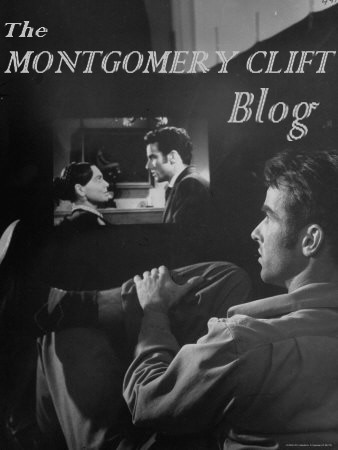
































.-+albornoz+(4)+BLOG.jpg)
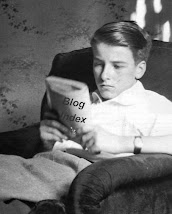
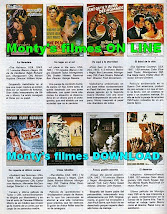


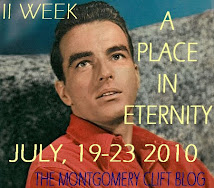
















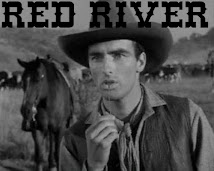


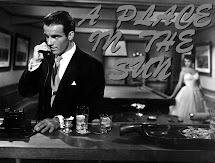2.jpg)
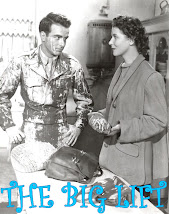.jpg)


.jpg)

